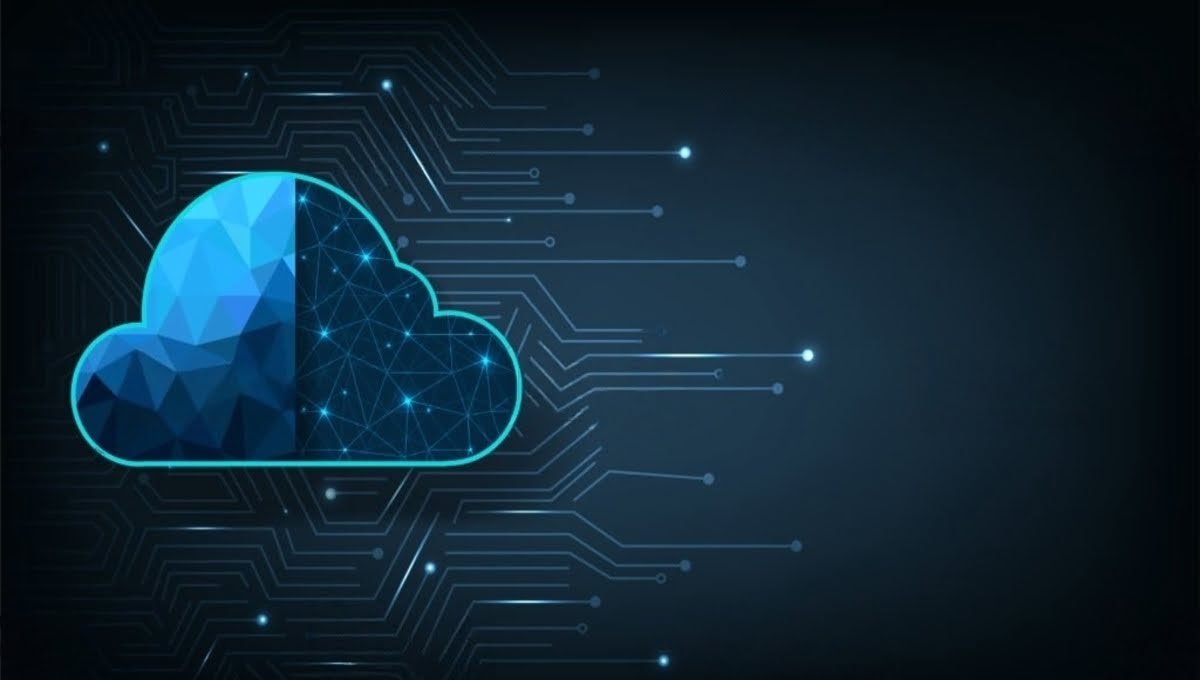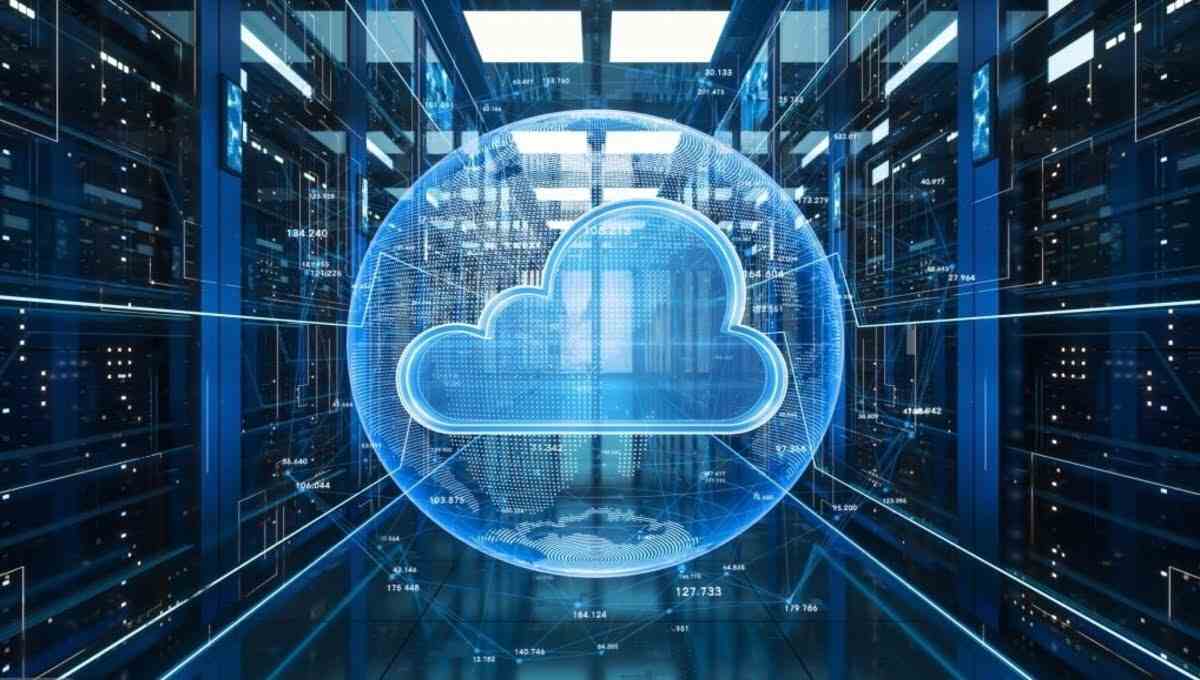CLOUD COMPUTING
How Electronic Data Is Accessed in Cloud Computing

Cloud computing has developed as a revolutionary paradigm that has altered how businesses and individuals store, access, and manage electronic data in today’s rapidly expanding technological landscape. Cloud computing has developed into a vital tool as a result of the widespread use of the internet, enabling easy access to data and applications from any location at any time. In this article, we explore the methods that make it possible for electronic data to be retrieved via cloud computing, as well as the advantages it offers to many industries.
Introduction
Cloud computing, in essence, is the delivery of computing services—such as storage, processing power, and applications—over the internet. It eliminates the need for physical infrastructure and allows users to access resources remotely, making it an indispensable solution in today’s digital world.
Understanding Cloud Computing
What is cloud computing?
Cloud computing involves the provision of on-demand resources that can be accessed remotely. These resources are hosted on a network of servers located in data centers around the world. Users can store their data and applications on these servers and access them through the internet.
Types of Cloud Services
Infrastructure as a Service (IaaS), Platform as a Service (PaaS), and Software as a Service (SaaS) are the three basic paradigms used to classify cloud services. Each model gives various degrees of administration and control over the applications and infrastructure.
Accessing Electronic Data in the Cloud
Electronic data in the cloud can be accessed in a variety of ways, depending on the specific cloud storage provider and the type of data. Some common methods include:
- Web browser: Most cloud storage providers offer a web-based interface that allows users to access their data from any device with a web browser. Simply navigate to the provider’s website and sign in with your account credentials. Once logged in, you will be able to view, download, and manage your files.
- Desktop app: Many cloud storage providers also offer desktop apps for Windows and Mac computers. These apps allow users to easily sync their cloud files with their local devices, making it easy to access and edit files offline.
- Mobile app: Cloud storage providers also offer mobile apps for iOS and Android devices. These apps allow users to access their cloud files on the go.
- API: Cloud storage providers also offer APIs that allow developers to integrate cloud storage functionality into their own applications. This allows businesses to build custom applications that can access and manage cloud data.
Here are some specific examples of how to access electronic data in the cloud:
- To access Google Drive files from a web browser, navigate to drive.google.com: https://www.google.com/drive/, and sign in with your Google account. Once logged in, you will be able to view, download, and manage your files.
- To access Dropbox files from a desktop app, download and install the Dropbox app for Windows or Mac. Once installed, open the app and sign in with your Dropbox account credentials. The app will then sync your Dropbox files with your local device.
- To access iCloud files from an iOS or Android device, download and install the iCloud app. Once installed, open the app and sign in with your Apple ID. You will then be able to access your iCloud files from the app
Security Measures for Data Access
Encryption and Decryption
To ensure the security and privacy of data during access, encryption techniques are employed. Data is encrypted before transmission and decrypted upon retrieval, making it extremely difficult for unauthorized parties to decipher the information.
Multi-Factor Authentication
Multi-factor authentication adds an extra layer of security by requiring users to provide multiple forms of verification before accessing their cloud data. Because of this, even if login credentials are stolen, unauthorized access is prevented.
Benefits of Cloud Data Access
- Scalability and Flexibility: Cloud data access offers unparalleled scalability, allowing users to scale up or down based on their requirements. This adaptability guarantees cost-effective resource utilization.
- Cost Efficiency: Capital costs are decreased because cloud computing eliminates the requirement for up-front infrastructure investments. It is a cost-effective solution for companies of all sizes because users only pay for the resources they really use.
Challenges in Cloud Data Access
- Latency Issues: Cloud data access can sometimes suffer from latency, where there is a delay in data retrieval due to the physical distance between the user and the data center.
- Dependence on Internet Connectivity: Accessing cloud data is dependent on internet connectivity. A lack of internet access can hinder data retrieval and application usage.
Future Trends in Cloud Data Access
Edge Computing
Edge computing aims to reduce latency by processing data closer to the source, minimizing the distance data needs to travel.
AI-Driven Access Optimization
Artificial intelligence is being utilized to optimize data access by predicting usage patterns and proactively moving data to locations where it’s most likely to be accessed.
Conclusion
The way we access and manage electronic data has been completely transformed by cloud computing. It is an indispensable tool for both individuals and enterprises because of its simplicity, scalability, and adaptability. We can anticipate many more cutting-edge ways to access cloud data as technology continues to advance, significantly enriching our digital experiences.
FAQs
Is cloud data access secure?
Yes, cloud data access is secure due to encryption, multi-factor authentication, and robust security measures implemented by service providers.
Can cloud data access work offline?
No, cloud data access requires an internet connection for retrieval and management.
What is edge computing’s role in cloud data access?
Edge computing reduces latency by processing data closer to the user, enhancing the speed of data access.
How does cloud data access benefit businesses financially?
Cloud data access eliminates upfront infrastructure costs and offers pay-as-you-go pricing, resulting in cost savings.
How has cloud computing affected the internet?
Data can be kept in the cloud for later use, in-depth analysis, and enhanced performance through the use of cloud computing and IoT. Both consumers and companies desire high-quality, fast-loading applications and services. As a result, the network will see faster upload and download rates.

 FUNDAMENTAL2 months ago
FUNDAMENTAL2 months agoHow Cloud Computing Improving Customer Service Processes

 FUNDAMENTAL7 months ago
FUNDAMENTAL7 months agoWhat is cloud computing? A Comprehensive Guide

 FUNDAMENTAL4 months ago
FUNDAMENTAL4 months agoHow can Cloud Technology Help Small Businesses ?

 FUNDAMENTAL7 months ago
FUNDAMENTAL7 months agoEvolution of Cloud Computing : A Well-Explained

 CLOUD COMPUTING2 months ago
CLOUD COMPUTING2 months agoWhat Is VlAN and VSAN In Cloud Computing?

 FUNDAMENTAL2 months ago
FUNDAMENTAL2 months agoIaaS PaaS and SaaS in cloud computing

 FUNDAMENTAL2 months ago
FUNDAMENTAL2 months agoWhich is a fundamental attribute of cloud computing?

 CLOUD COMPUTING2 months ago
CLOUD COMPUTING2 months agoHow to Make Your Own Cloud Storage : A Step-by-Step Guide









